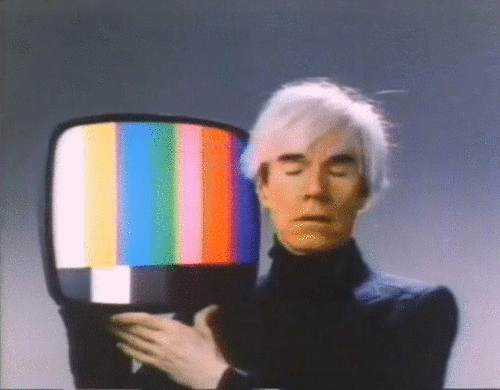Art is Dead
AH 306: Contemporary Issues in Art
Fall 2009
Christina Schmid
Zack Goulet
Art is Dead

I have noticed that the large majority of students enrolled at The College of Visual Arts mean to study commercial art. In today’s age, our culture promotes entertainment and pleasure. The purpose of art has been placed in the shadows of American culture. Television and the Internet are the two elements of our society that have replaced the purpose of art. The notion, “art is dead” refers to the insignificance of commercial art in our spiritually deprived nation. Artists need to diverge from the commercial culture as far as they can to promote spiritual awareness and healing “in a society in the midst of a mental illness plague” (Redeeming 166).

Art culture no longer cares about uplifting people’s lives as much as it cares about the concepts between society and the art market. Andy Warhol’s pioneering of Pop Art admitted the decadence of social ideology. The public loved his clever but also generic representation of what could pass by the common man’s eye as art. As a joke towards our materialistic times, Andy Warhol stripped art of any kind of spiritual idealism that painters such as Van Gogh devoted their lives with. By mocking art in the form of art, Andy Warhol destroyed the ideal of spiritual craftwork as art. “Claiming that art and money share common existential ground is nihilistic” (The End 149).

Society is undergoing a huge change involving the advances in technology. Craftwork in art is “secondary to the concept behind it” which reflects modern man’s unwillingness to do hard work (Redeeming 165). Contemporary art has taken the “work” out of “art work”. The importance of craft in art is so money is not the governing force behind the potential of art. Painting and sculpture are craft activities that serve as a kind of creative meditative labor, like it once was for artists such as Van Gogh. Outsider art was a term coined by art critic Roger Cardinal in 1972 as a synonym for art brut. Art brut means raw art or rough art. The philosophy of it was popularized by Jean Dubuffet to describe art that was created outside the boundaries of official culture. Outsider art is spiritually strong because it has little or no contact with the mainstream art culture that is now corrupt. Money has been the deciding factor on what is considered art for the past couple decades whereas art brut relies purely on its own craft to support its function.
When I say art is dead I mean that the commercialism of most America has consumed the true essence of art that is spirituality. People must realize that Andy Warhol’s fame and fortune was just a fluke in history.

Works Cited
Kuspit, Donald. “Mirror, Mirror on The Worldly Wall, Why is Art No Longer
The Truest Religion of All?: The God That Lost Faith in Itself.” The End of Art. New York: Cambridge University Press, 2004. Pages 143-173.
Kuspit, Donald. “Craft as Art, Art as Craft.” Redeeming Art. New York: Allsworth
Press, 2000. Pages 158-168.
Amazing post, very well written. Thanks @web-gnar for sharing this post. 😊💜
Merry Christmas to you and your family!! 🎁🎁🍰🍰🎀🎀💖💖🎄🎄🎊🎊🎉🎉🎈🎈
<3 thanks so much. much love to you and your family too
Brilliant post and great publishing work. Amazing article! Thanks @web-gnar for sharing this post.
Wish you a very Merry Christmas to you and your family @web-gnar !! 🎁🎁🍰🍰🎄🎄
Peter good
peter